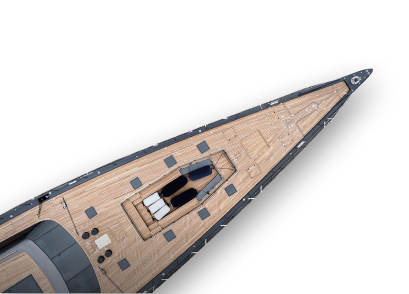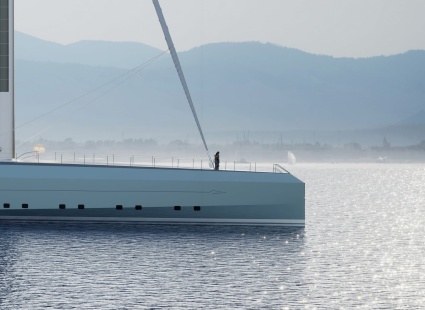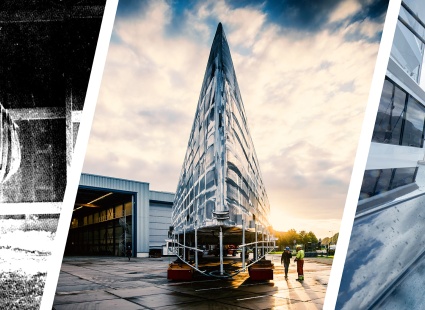WHAT GOES DOWN, MUST COME UP!
…the 59.7m / 196ft high-performance Malcolm McKeon sloop, which is currently under construction at Royal Huisman’s headquarters in Vollenhove.
Gregory Monks, the owners’ representative of Project 404, explains “Why?”:
“Finding the right balance between performance and luxury is a very personal choice. Each custom sailing yacht project starts with a design brief from the Owner which is translated – by the naval architect, designers and shipyard – into a design which maximises the potential of the brief. For Project 404, the Owner had a very clear vision to build the ultimate sailing yacht with the highest level of luxury, working in perfect harmony with the very best in performance.”
“The yacht can motor in ‘quiet mode’ using only the batteries, so an early morning silent departure from a peaceful anchorage is possible”
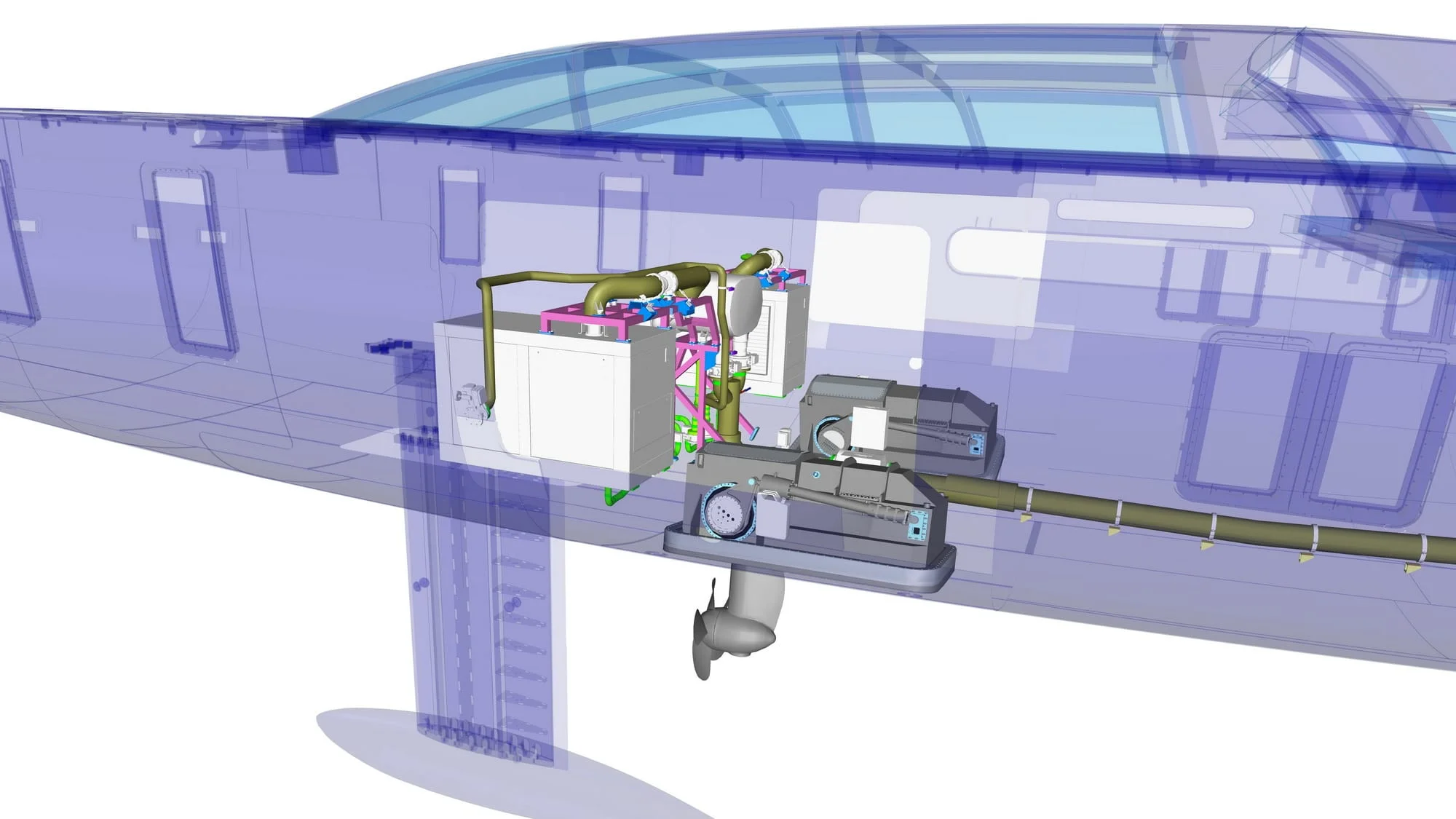
“We have specified extremely low noise and vibration limits which are important for luxury. For Project 404, the noise and vibration levels were greatly improved with the introduction of twin electric drive propulsion. The retractable drive units are much further forward compared to a more traditional shaft and propeller set-up. This means that they lower out of the hull directly below the machinery and midship water sports storage areas, rather than being fixed-mounted directly below the aft guest accommodation. This provides even further advantages to the onboard luxury experience for the guests when motoring. As the propulsion is electric driven, the vibrations from mechanical machinery are greatly reduced over a conventional drive. The yacht can motor in ‘quiet mode’ using only the batteries, so an early morning silent departure from a peaceful anchorage is possible.
Looking at the sailing performance side, the electric drive units are fully retractable into the hull. Reducing both aerodynamic and hydrodynamic drag is a critical factor in improving sailing performance. With the electric drive units fully retracted into the hull, we achieve a very slippery hull with minimal drag from appendages, which has a significant effect on sailing performance.”
“Retractable electric propulsion is the perfect example of how to successfully blend performance and luxury, and achieve big gains in both disciplines”
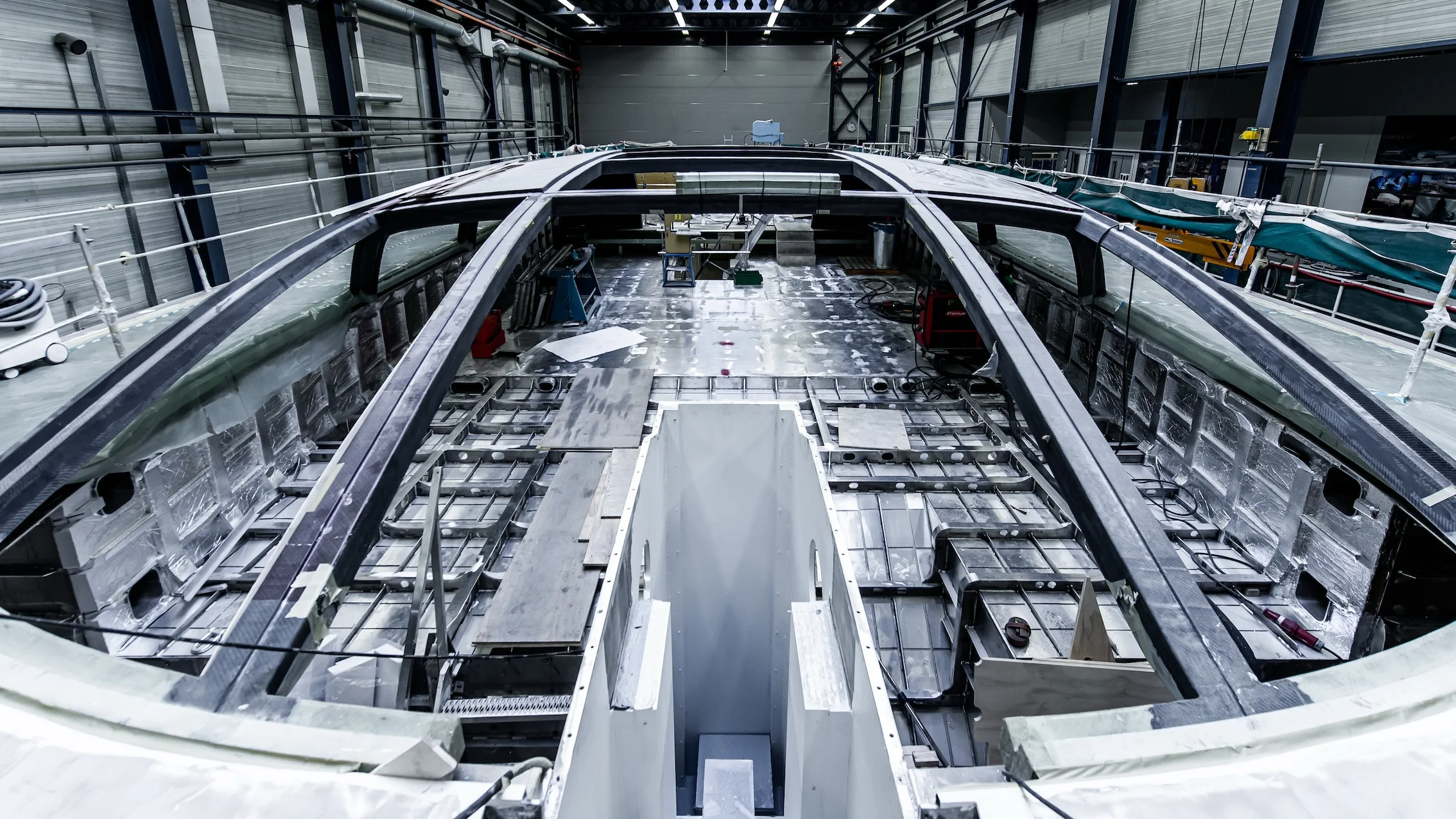
“The boat will sail more efficiently, accelerate faster and consistently achieve higher speeds as a result. The drive units also cancel out the need for a stern thruster, as they can each be turned 90 degrees. This saves weight, which also improves performance. There are also benefits when it comes to safety. Should the yacht encounter, for example, a fuel contamination issue and suffer mechanical generator failure, the propulsion units can serve as underwater turbines, generating power for the ship’s systems and charging the batteries. Having plenty of redundancy is a key factor for sailing safely around the world, and this system further enhances the yacht’s safety. Using retractable electric propulsion is the perfect example of how to successfully blend performance and luxury, and achieve big gains in both disciplines with the same design solution.”
Gregory Monks, owners’ representative of Royal Huisman project 404
“What goes down, must come up!” was first published in a previous edition of “inhuis”. A video of the retractable electric drive propulsion can be found at this website: discover > innovation > 1. sustainabilty [link]
